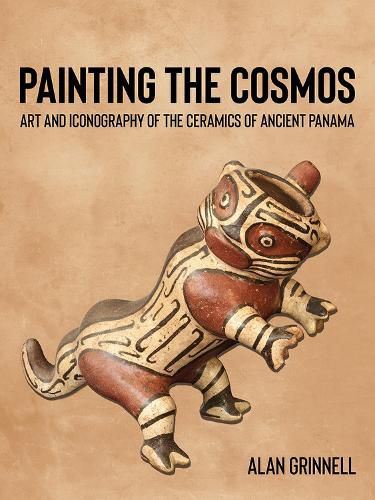Readings Newsletter
Become a Readings Member to make your shopping experience even easier.
Sign in or sign up for free!
You’re not far away from qualifying for FREE standard shipping within Australia
You’ve qualified for FREE standard shipping within Australia
The cart is loading…






The result of decades of study, Alan Grinnell's Painting the Cosmos presents the spectacular and underappreciated art of Panama and its revealing iconography. Emphasizing brightly painted polychrome designs with complex iconography on myriad ceramic forms, the art of Central Panama (ca. 200 BCE-1400 CE) is highly distinctive compared to other pre-Columbian cultures. The book illustrates more than eight hundred vessels in full color, many of which will be unfamiliar even to pre-Columbian specialists, and proposes interpretations of the iconography informed by the archaeology, history, and ethnohistory of the region. In these animistic cultures, much of the iconography reflected interactions of humans with the natural world. The author identifies persistent design themes that reflect the myths and beliefs of these ancient peoples.
Enriched by current scholarship, this beautifully produced volume fills a major gap in the knowledge of and appreciation for the art and cultures of the ancient Americas. It serves as both an introduction to this unique and relatively unknown culture and a resource for scholars in pre-Columbian history, art, and culture.
$9.00 standard shipping within Australia
FREE standard shipping within Australia for orders over $100.00
Express & International shipping calculated at checkout
The result of decades of study, Alan Grinnell's Painting the Cosmos presents the spectacular and underappreciated art of Panama and its revealing iconography. Emphasizing brightly painted polychrome designs with complex iconography on myriad ceramic forms, the art of Central Panama (ca. 200 BCE-1400 CE) is highly distinctive compared to other pre-Columbian cultures. The book illustrates more than eight hundred vessels in full color, many of which will be unfamiliar even to pre-Columbian specialists, and proposes interpretations of the iconography informed by the archaeology, history, and ethnohistory of the region. In these animistic cultures, much of the iconography reflected interactions of humans with the natural world. The author identifies persistent design themes that reflect the myths and beliefs of these ancient peoples.
Enriched by current scholarship, this beautifully produced volume fills a major gap in the knowledge of and appreciation for the art and cultures of the ancient Americas. It serves as both an introduction to this unique and relatively unknown culture and a resource for scholars in pre-Columbian history, art, and culture.